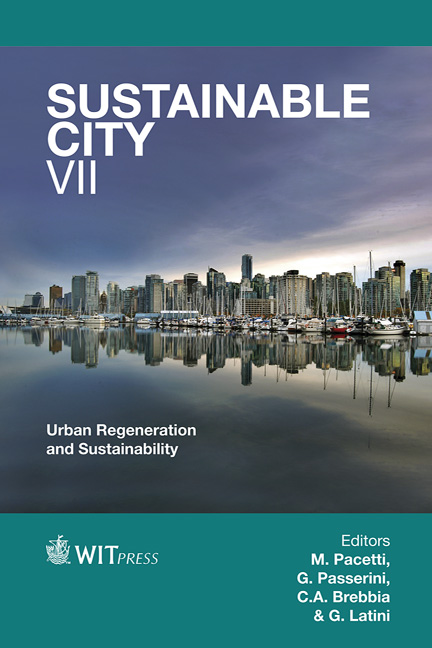Assessing The Representativeness Of Thermal Comfort In Outdoor Spaces
Price
Free (open access)
Transaction
Volume
155
Pages
12
Page Range
835 - 846
Published
2012
Size
1,369 kb
Paper DOI
10.2495/SC120702
Copyright
WIT Press
Author(s)
R. Cocci Grifoni, M. Pierantozzi, S. Tascini & G. Passerini
Abstract
This paper presents preliminary findings of an outdoor thermal comfort study conducted in an urban area to evaluate the representative Predicted Mean Vote index. Thermal comfort in outdoor urban spaces is often faced with the task of using large amounts of data that yields meaningful information concerning the thermal sensation. It is essential to interpret correctly meteorological and thermal comfort data. In particular, it is important to interpret data using an appropriate statistical analysis, and the analysis of thermal comfort presupposes a synthesis of information derived from a series of temporal data. It is indispensable to deal with realistic data and an actual day should be considered, but the widely used average day is not an actual day. On the contrary, the representative day is made of the actual data of the day, in the period considered, where the sum of the mean-square differences among its monitored quantities, averaged within each hour, and the same quantities for all other days at the same hour, is minimised. The goal of this research is to assess the representativeness of the thermal comfort indices provided using a representative day technique. Specifically, a new tool has been developed using a powerful and useful environment for symbolic and numerical computing and data visualization such as Wolfram MathematicaTM, aiming at linking information computed by a bio-climate model to the representative day technique. The possibility of assessing the diurnal variation of PMV thermal comfort index by introducing the Representative Day technique has been evaluated in order to gather information on the correlation between thermal comfort and meteorological parameters. A case study has been analysed in order to improve the microclimate in an outdoor space located in a typical Mediterranean area and a comparison with CFD code, namely ENVI-MET, has been reported. This technique can prove to be a very
Keywords
representative day, predicted mean vote, predicted percentage of dissatisfied, outdoor thermal comfort, thermo fluid dynamic analysis





